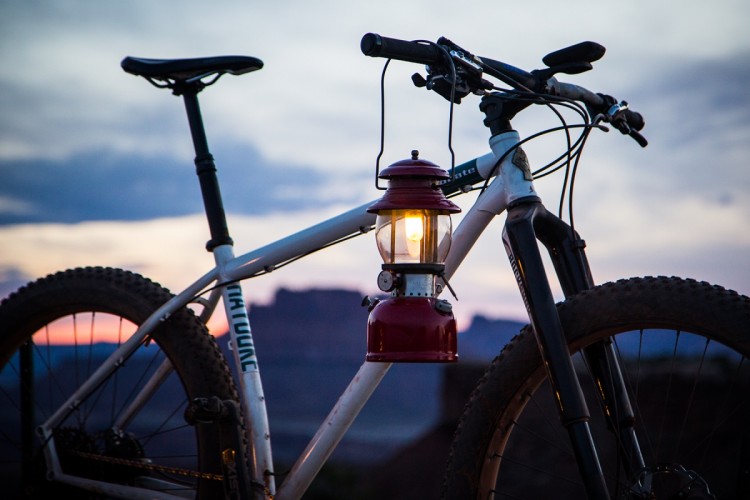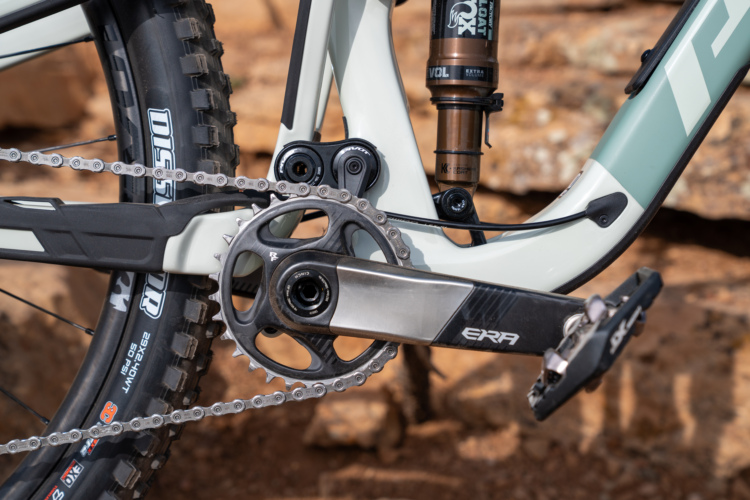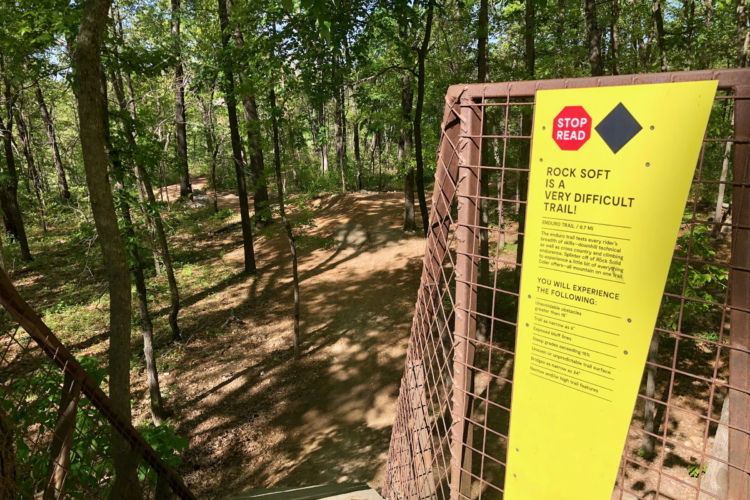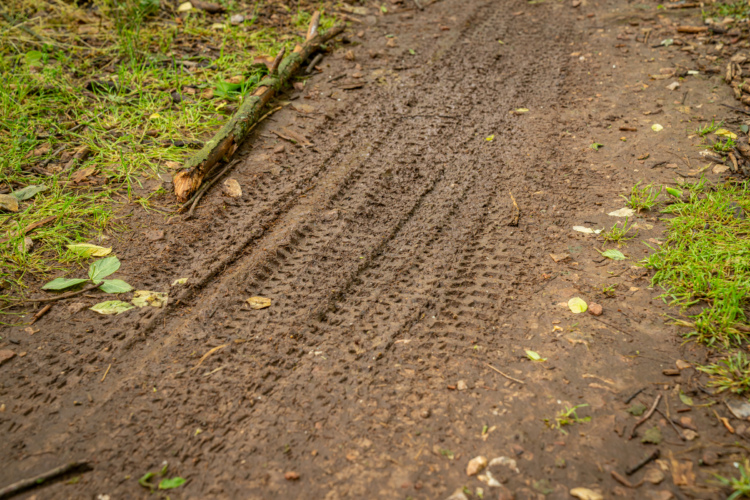Yeti has just released a brand-new trail bike: the SB5c. Sporting 27.5″/650b wheels, this is a full-carbon rig with 5″ (127mm) of travel.
I’m sure the question that’s on everyone’s mind is: “is this Yeti’s answer to the controversial discontinuation of the SB66c?” While maybe this bike will help calm the crowd of agitated SB66c fans, the SB5c most definitely isn’t just a 27.5-wheeled version of that acclaimed steed.
For starters, with just 5″ of travel, this bike isn’t quite as long-legged as the SB66c. But the real difference is the never-before-seen Switch Infinity Technology.
Switch Infinity
Developed in conjunction with Fox, the Switch Infinity technology/linkage is radically different from most other suspension linkages on the market. While it is descended from the system found in the previous SB66c and the SB95, Yeti and Fox have taken things to a ‘hole ‘nuther level. Since the technical details are probably way over this poor journalist’s head, I’ll quote for you Yeti’s take on the tech:
Overview
Switch Infinity utilizes a patented translating pivot that switches direction as the bike moves through its travel. This provides excellent anti-squat characteristics for superior pedaling performance and ideal suspension characteristics as it gets deeper into the travel.
Efficiency
At the beginning of the travel, the main pivot translates upward, creating a rearward wheel path. This provides excellent anti-squat and optimum pedaling performance. While the pedaling is crisp, the linear leverage ratio and translating pivot combine for amazing small bump sensitivity. The linear movement provides unprecedented control of the kinematics and marks a significant improvement over link-based designs.
Control
Once the Switch Infinity system reaches the inflection point, the main pivot begins to translate downward. This linear movement prevents the chain force from adversely affecting the suspension performance and gives the suspension a controlled, bottomless feel.
Mechanical Superiority
The linear path of the patented Switch Infinity system has very little resistance as it moves through its travel. This allows the system to achieve seemingly contradictory characteristics. In the early stage of the travel it displays superior pedaling efficiency and excellent small bump sensitivity. As you move deeper into the travel, it is well supported and responds effortlessly to square edge hits. The mechanical advantage of our linear system cannot be achieved with traditional link designs.
Durable
The Switch Infinity is a simple, lightweight, bombproof system built by Fox Racing Shox from proven suspension components and engineered and tested to withstand the worst riding conditions. We only use the best components in its construction — Kashima coated stanchions for low friction and durability, seals and bushings that are used in Fox’s off-road racing division, and a lightweight forged translating pivot. We have field tested the parts for over three years and the original bushings, seals, and stanchions are still in perfect working condition. Fox has thrown the system into its testing regimen as well — spray testing, mud, dyno, and ride testing — and found the system worthy enough to be “Enabled by Fox.” The system is significantly lighter (100g) than the original Switch Technology.
Tunable
Switch Infinity is a versatile system easily adaptable to different travel platforms. The system can be mounted in any orientation and can achieve a myriad of kinematics depending on the design intent. For example, longer travel bikes require drastically different kinematics later in the travel (controlling wheel path trajectory). The Switch Infinity system can control this much more precisely than other suspension designs because of the linear path of the main pivot. We also can control leverage ratio and anti-squat with much greater freedom than other systems.
Now, if that happened to go over your head as well, be sure to check out this video for a visual demonstration of what happens throughout the travel range:
One thing is certain: if the paragraph titled “Tunable” is any indication, the SB5c is just the first of many Yeti bikes that we’ll see with Switch Infinity technology.
SB5c Specs and Geometry
Now that we’ve fully established how radically different this rear suspension design is, here are the full specs, geometry numbers, and prices for the SB5c:
Geometry
X01 Build Kit
Fork: Fox Float 34 140 Factory Custom Yeti Decals
Headset: Cane Creek 40
Crankset: SRAM X1 (32T)
Rear Der: SRAM X01 11spd
Shifter: SRAM X01 11spd
Cassette: SRAM XG1195 11spd
Chain: SRAM XX1 11spd
Wheels: Custom DT Swiss 350 Hub w/ XM 401 Rim (Option: Enve M60/240)
Tires: F: Maxxis Ardent 2.4 / R: Maxxis Ikon 2.2
Brakes: Shimano XT
Rotors: Shimano IceTech 180 F / 160 R
Handlebar: Easton Haven Carbon 740mm
Stem: Thomson Elite 70mm
Grips: Yeti Lock-on
Saddle: Yeti WTB Volt Custom
Seatpost: Thomson Elite (Thomson Elite Covert Dropper +$350)
Price: SB5c with SRAM XO1 and Enve M60 wheels: $8999 (as pictured)
SB5c with SRAM XO1: $6599
Weight: 25.5 lbs with Thomson Elite post
26.2 lbs with Thomson Elite dropper post
Option: The SB5c will also be available with a SRAM XX1 Build Kit with an Enve M60 wheelset for $10,599.
Availability: Now.


























20 Comments
Jul 17, 2014
Jul 17, 2014
Jul 21, 2014
Jul 17, 2014
Jul 18, 2014
Jul 18, 2014
Of course, SC and Intense remain firmly in the "boutique bike" category. I think the major players are, as you say, moving more trail bikes than all-mountain/enduro bikes. Maybe Yeti is thinking more like the big boys and less like their boutique background.
Still I would have loved to have seen them put 6" on a switch/27.5 platform. I'm sure it would have been glorious. After all, they put 5" on the SB-95--it only makes sense to crank up the travel as you move down a wheel size. Especially since one of the selling points of the switch is its efficiency combined with bump compliance--if that's truly the case, there's no need to not give it some endure-level travel!
Jul 19, 2014
Jul 18, 2014
If the bike rides as well as the precious SB platform it should be great. The only issue I have is the price. I think they would be well served to have a lower tiered carbon similar to what Santa Cruz did with its Carbon and Carbon C trims. It would really drive the price down and make the bike a little more attainable.
Jul 18, 2014
I love the Tracer, but want a longer top tube--traditionally a hallmark of Yeti geometry. Woulda' been nice to see Yeti go that route, especially since the 66 got canned.
Jul 23, 2014
Jul 25, 2014
Jul 19, 2014
Jul 21, 2014
Is that what you're thinking of?
Jul 19, 2014
Then they added the SB-95 (29" wheel/5" travel)
Then they added the SB-75 (27.5" wheel/5" travel)
All with the original switch platform. This new switch looks significantly different.
Then they deleted the SB-66. As the article in the link above noted, they couldn't give them away on the open market--even though every guy in every Yeti shop I talked to said the -66 was their fave--and as JKDouglas noted, they still have a team racer using one.
Jul 21, 2014
If you noticed, the new "Switch Infinity" had a Yeti patent pending number with it, which tells me that not only did Yeti improve the design, they did so enough to make it their own. So, from the looks of it you won't see any non Yeti bikes with the switch infinity suspension design. That should really help them differentiate themselves from the rest of the market.
Jul 20, 2014
I think switch is Yeti proprietary, so I doubt any other bikes have it. They haven't licensed it like the VPP (used by Intense and Santa Cruz) or the dw-link (used by Ibis, Turner and Pivot)
Jul 20, 2014
I'm still a 26" fan, and I like the 27.5". I can't get into the 29er thing, just doesn't float my boat on how they behave.
All in all, I think it is great that consumers have a choice, even though I don't like that production of 26" bikes is decreasing. But the market is the market. and companies have to compete and thus make what they think the consumers will want. From what I've read, it seems the companies were the ones that progressively offered the different wheel sizes, and yet now, it seems they are somewhat concerned about 26" sales. =)
Jul 18, 2014
http://www.singletracks.com/blog/mtb-news/news-yeti-abandons-downhill-racing-in-2014-focuses-solely-on-enduro/
If Yeti racing is focused on Enduro Racing, what is their current Enduro bike? Or are they going through yet another shift in priorities?
Jul 21, 2014
Jul 17, 2014